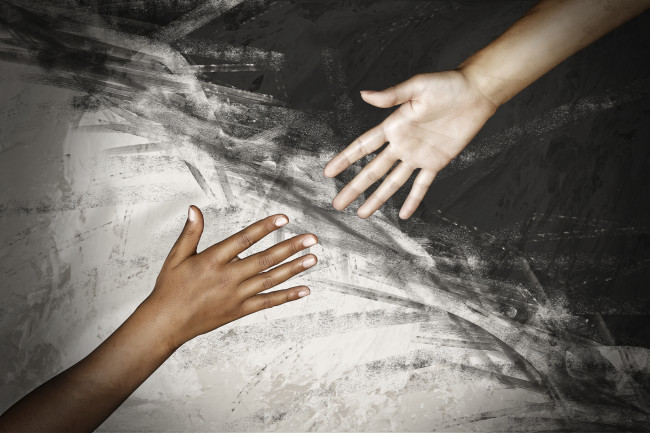I have a confession to make: I’m a racist.
If you know me (or see that my job title is Director of Inclusion and Change), this might come as a shock–especially because I’m a diversity and inclusion consultant. Still, yes, I’m a racist. But you know what? To some extent, you are, too.
If you’ve ever seen the musical Avenue Q (winner of the 2004 Tony Award for Best Broadway Musical, FYI), you might be familiar with the song “Everyone’s a Little Bit Racist” (warning: lyrics NSFW!). In this song, several of the characters sing (joyously!) about how they’re racist. They sing not about overt or explicit racism but more subversive, unconscious bias that we, as humans, all have. It was at the moment I first heard this song that the concept of hidden or unconscious bias hit my, well, consciousness.
What’s hidden or unconscious bias?
Hidden or unconscious bias is the preference for or against a person, thing, or group held at an unconscious level. This means we don’t even realize that our minds possess this bias of, say, that person on the phone who must be unintelligent because his English isn’t as good as yours, or that the masculine-looking woman in front of you at the store must be a lesbian. In contrast, an overt – or explicit – bias is an attitude or prejudice that one endorses at a conscious level; it’s obvious and blatant. And sometimes, what’s “overt” bias to one person is “unconscious” bias to another, based upon our individual self-awareness.
Research on hidden bias shows that, regardless of the best intentions, most people hold deep-seated resistance to the “difference” of others, whether that difference is defined by evident factors such as race, gender, ethnicity, age, or physical characteristics, or more subtle ones such as background, personality type, experiences, or even sexual orientation. But bias can also exist in a positive sense: we might favor our family, our community, and people with whom we feel a connection based on shared characteristics or experiences (e.g., same alma mater or employer).
These hidden biases aren’t purposely or consciously created; they are products of our brain’s self-generated definitions of normal, acceptable, or positive. They’re shaped by many factors: from past experiences to our local or cultural environment, to the influence of social community and the media. We don’t consciously create these definitions of “normal” versus “different,” “good” versus “bad,” or “acceptable” versus “unacceptable.” In fact, conscious and unconscious biases are often divergent; our hidden biases might exist in spite of our sincere desire to be bias-free, and in direct contradiction of the attitudes we believe we have.
Why do we have hidden biases?
Well, we can blame it on our cave ancestors. Back in the day, a cave person had to quickly decide if the big, furry, sharp-toothed animal at the cave door was friend or foe; and those quick assertations of safety were processed in our cave brains. Science has shown that we’re bombarded with 11 million bits of information every moment, but we consciously process only 40 bits of data at any time. How do we manage with that 99.9999996{d89e4f83f6b6a066fc09cee339cefb53fa8e17050e8090b978ce7abfcf69967c} gap? Through our unconscious bias. So as humans, it is perfectly natural for us to create these “cognitive shortcuts” to help us be safe, survive, and manage all this data input.
But in 2015, we aren’t cave folk, and that wiring sometimes goes against how we want our “auto systems” to work, for the most part. Think about you at work: do you want your cave wiring impulsively taking over who you should work with, the feelings you have toward hiring someone, or defining how you act toward a new coworker? No, you don’t. You want your conscious brain to be prevalent, and that’s not always easy to do.
How can you manage your unconscious cave self?
Well, the first step is accepting that we do have unconscious bias. Recently I was running a workshop on unconscious bias and asked the question, “Who’s racist?” I raised my hand, and out of the 60-plus attendees, about four others acknowledged that they’re racist. As my co-facilitator noted, what was interesting wasn’t those of us who raised our hands, but that nearly all workshop participants didn’t also raise theirs. We each have a skewed view of the world looking through our respective lenses, but it’s having the awareness that we do have skewed world views that is vital to foster change, manage our behaviors, and not succumb to our unconscious. (Want to discover yours? Go to www.projectimplicit.com to take an assessment that highlights your biases. It’s fun!)
Next, it’s about educating others as to their own hidden biases. “But I’m not racist,” you might hear. “I have many black (or white or Latino, etc.) friends!” These types of statements are coming from the conscious brain, and not necessarily from our unconscious or hidden biased selves. So helping people – respectfully – understand that their biases are showing is important.
Finally, it’s looking at the bigger picture: the institutional biases that exist, how they affect your (personal and professional) life detrimentally, and how we can start to challenge them. Why does your company hire mostly white dudes? Are your marketing messages pretty non-inclusive and exclude non-traditional families? Do you tend to have friends whose demographic makeup is very similar to yours (all straight friends, all Hispanic friends)? Think about these and decide if your unconscious biases are influencing your actions.
Hidden bias means you’re human.
So we’re all racist, or sexist, or homophobic, or any other –ist. And that’s OK; this means we’re human. Ultimately, it’s how we manage these feelings and our actions that are key to “unbiasing” ourselves and gaining the rewards of that freedom.
A different version of this story was published by Watermark Media on November 3, 2015.




